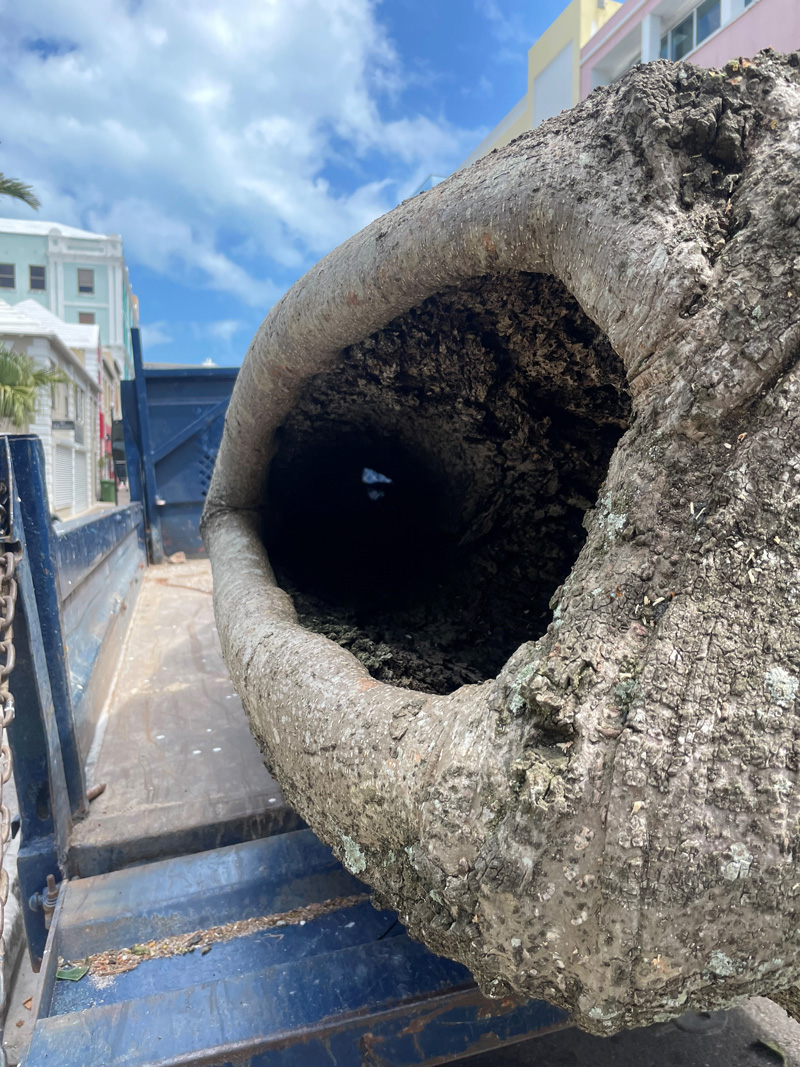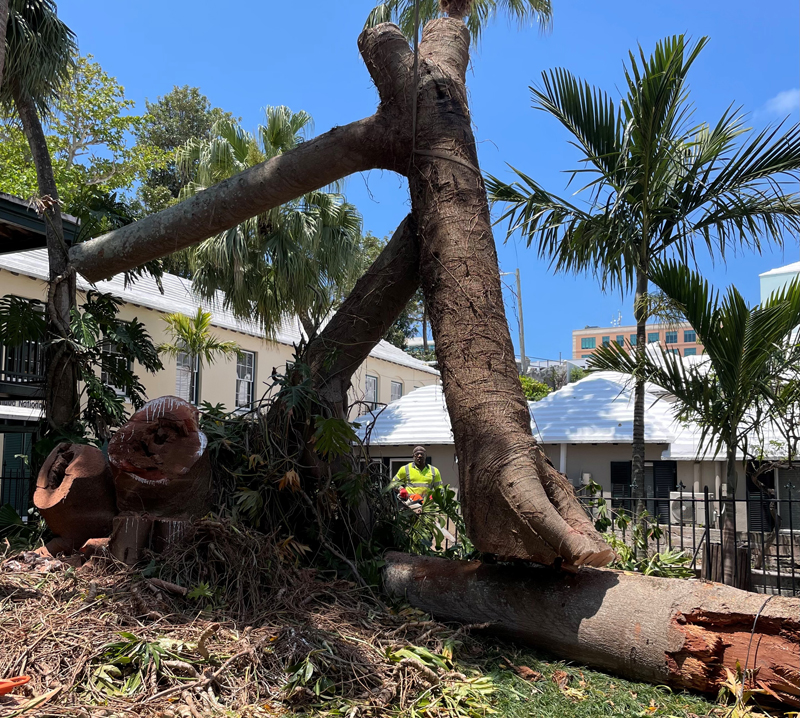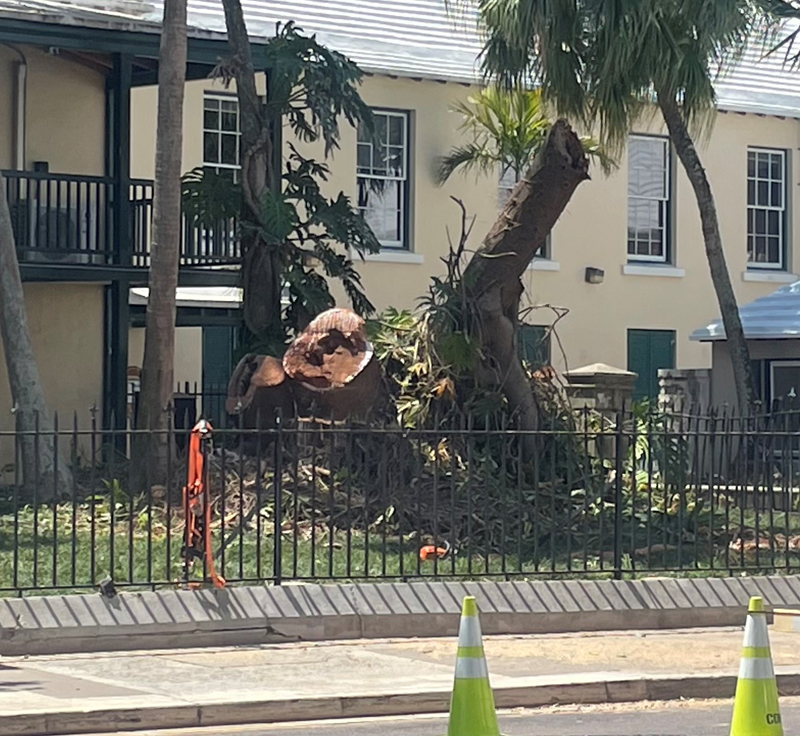City Advised To Remove 176-Year-Old Tree
A Tree Assessment Report recommended removing a 176-year-old tree as as any efforts to save the tree “would only serve to prolong its inevitable fate and it would remain a safety issue to the public as well as the surrounding buildings,” the City said.
A spokesperson said, “As a result of the incident involving a large branch falling from the historic India-rubber tree at the Bermuda National Library on Queen Street, the City of Hamilton engaged Brown and Co. Ltd, a local landscape and tree surgeon company, to undertake a comprehensive examination of the tree to determine its viability and overall health as well as suitable treatment.
“Outwardly, the tree looked ‘healthy and vigorous’ with abundant foliage and a full crown. Upon internal inspection, the tree was found to be riddled with numerous cavities and significant decay and rot, not uncommon for a subtropical species of its age – 176 years.
“Planted in 1847 by then Hamilton postmaster William Bennett Perot, the tree was originally from Guyana and sent to Mr. Perot by his son, Adolphus, to be planted at his home, Par-la-Ville.
“Over the years the majestic tree on Queen Street has become a historical landmark. There were originally ten India-rubber trees planted across the island, one of which is the impressive rubber tree by the Warwick Post Office. The City of Hamilton purchased the Par-la-Ville property from the Perot family in 1900.
“The City met with local environmental organizations including BEST, the Bermuda National Trust and the Department of Planning’s Historical Officer on May 12th and shared with them the Tree Assessment Report provided by Brown and Co. Ltd.
“The overall findings of the report made the unfortunate recommendation that the tree be removed as any efforts to save the tree in situ would only serve to prolong its inevitable fate and it would remain a safety issue to the public as well as the surrounding buildings.
“The local environmental organizations understood and accepted the recommendation and future plans to commemorate the tree have been discussed. The City has already taken steps to propagate the tree and work by the City crews started on Sunday, May 14th to remove the large limbs.”
City Engineer Patrick Cooper said of the tree’s removal, “The decision to remove the tree is an emotive and unfortunate one but the City must accept the professionals’ recommendation to undertake the removal in the best interest of the public’s safety. The tree’s historical significance is not lost on us but fortunately the tree can and has been propagated to enable it to have a new life to be enjoyed by future generations.”
Read More About
Category: All, Environment, History, News





Landscapers always recommend cutting down large trees as they make lots of money to do so. It’s a travesty to kill such a grand old tree that has benefited all local families for many generations.
It’s certainly unfortunate that it had to go.
Travesty implies a distortion of fact, but even to untrained eyes the photos tell the story. The tree was clearly unsafe and we’re going into the season now.
Not a travesty, but taking the tough decision may well have avoided a tragedy.